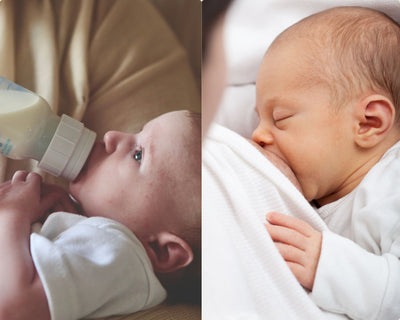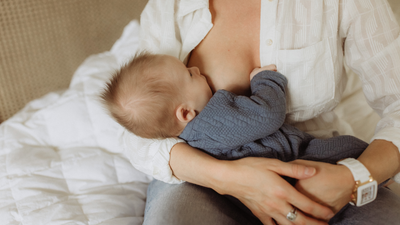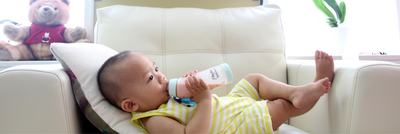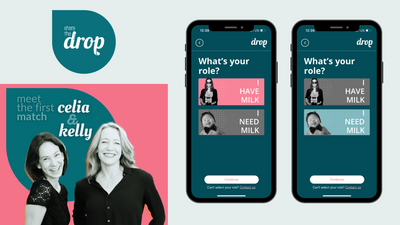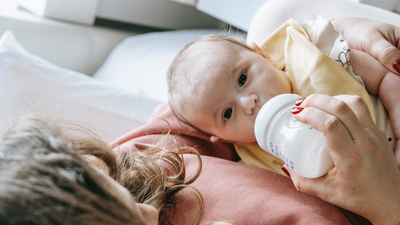The Pros and Cons of Baby-Friendly Hospitals
By Jordan Berns
When it comes to having a baby and breastfeeding, you’ll find that one hundred different people have one hundred different opinions. In fact, even the world’s leading experts can have wildly opposing views on what’s best for baby and mother. One hot topic of controversy is the creation and policies of Baby-Friendly Hospitals.
In 1991, a collaboration between the WHO (World Health Organization) and UNICEF (United Nations Children’s Fund) yielded the Baby-Friendly Hospital Initiative (BFHI). The intent of this program was to reverse the dropping rates of breastfeeding across the globe. The BFHI was to support and inform mothers in delivery centers and provide continual educational programs about breastfeeding long after their babies were born.
This system for delivery and postnatal care has expanded; 150 countries are home to more than 20,000 centers deemed Baby-Friendly. The WHO and UNICEF believe this number will increase even more with time. The first Baby-Friendly Hospital in the United States was created in 1996. As of 2021, over 6.5 million babies were delivered in BFUSA (Baby-Friendly USA) facilities. In 2011, the United States Surgeon General called for plans to implement more Baby-Friendly Hospitals in the U.S. In 2013, Governor Jerry Brown passed SB 402 to ensure all prenatal hospitals in California will use the ten steps of the BFHI, especially aimed at increasing breastfeeding resources in lower income hospitals, by 2025.
The controversy around Baby-Friendly Hospitals is centered on their “Ten Steps to Successful Breastfeeding” and in the varying ways these standards are implemented.
Is a Baby-Friendly hospital right for you?
Pros:
- The BFHI is one of the reasons for improved newborn health statistics and more mothers choosing to breastfeed. For example:
- When 49 out of Cuba’s 56 hospitals and maternity centers became Baby-Friendly, rates of exclusive breastfeeding tripled from 1990 to 1996 to a total of 72% of mothers.
- In Gabon, the use the BFHI correlated with a 15% drop in neonatal diarrhea cases, and infant death rates decreased by 8%.
- By 1994, China, home to 6,000 Baby-Friendly Hospitals, saw rural exclusive breastfeeding percentages rise from 29% to 68% and urban numbers rose from 10% to 48%.
- In Santiago, Chile, the monthly postpartum clinic resulted in 60% of six-month-old babies being breastfed, compared to 20% of babies prior to the implementation of this clinic. These clinics are the tenth and final pillar for Baby-Friendly Hospitals: “Foster the establishment of breastfeeding support groups and refer mothers to them on discharge from the hospital or clinic.”
The main opponent to BFHI and BFUSA is the nonprofit, Fed is Best. Fed is Best argues that while some of the Baby-Friendly practices are good in theory, they place undue hardships on and potentially endanger mother and baby in an already stressful time.
What makes Baby-Friendly hospitals different?
Cons:
- One of the ten policies that Fed is Best disagrees with is: “Practice rooming in - allow mothers and infants to remain together 24 hours a day.” Mothers who need to recover after taxing births and want to rest by sending their babies to the nursery or giving them a pacifier, must sign a consent form that these are against BFHI recommendations. There are reports of this policy contributing to postpartum depression and anxiety.
- Alongside a similar vein, mothers who wish to give their babies formula violate the BFHI rule of “Give infants no food or drink other than breast milk, unless medically indicated.” If parents wish their children to have formula, they must sign consent documents acknowledging that BFHI doesn’t endorse this. On April 18, 2020, The New York Times reported of babies who have become dangerously dehydrated due to the reluctance of Baby-Friendly Hospitals to provide formula, and that some parents have smuggled formula into Baby-Friendly Hospitals to avoid the paperwork and consent process.
- There is some data that opposes BFHI reasoning. The American Journal of Pediatrics conducted a 2013 study that reported babies who were given supplemental formula in addition to breast milk were more likely to continue breastfeeding longer. The researchers suggested these mothers were able to produce more milk because they weren’t feeling as pressured to excel at exclusively breastfeeding. This study isn’t definitive however, and confirming and conflicting data continues to emerge.
Like all things in raising a child, there are pros and cons, should and should nots, and do and don’ts from nearly every organization and person in your life. At Lactation Lab, we believe that as long as your baby’s nutritional needs are being met, then your baby is well-loved and cared for. Ultimately, a baby’s parents know what is not only best for their baby, but what is best for the health of their caregivers.

